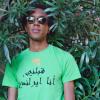Big Ears Festival in Review
Check out Flagpole's full 2016 photo gallery here and our previous coverage of Big Ears here, here and here.
Last weekend, while Slingshot was slinging its thing to Athens, its big sister, Big Ears, was conducting its fifth incarnation up in Knoxville, TN. This transcendent, semi-annual event consistently offers one of America's premier gatherings of the musical avant-garde. 2016 was no different in this respect, and the fest exceeded its precedent by continuing to expand the diversity of its programming. Wisely, Big Ears also made the choice to extend its booking radius for performing artists this year. In doing so, it has asked Slingshot, which previously capitalized on the selections made by Big Ears founder Ashley Capps and company to form its lineup, to assert a clear identity for itself.
Big Ears, conversely, has fully cemented its reputation for designing an expansive urban experience, bereft of the boundaries of buzz or genre, wrought with a web of cohesive thematic threads, both temporal and unspoken. As one moves through the weekend, synaptic connections are formed that offer an aesthetic logic to the roaring chaos of the sound.

Photo Credit: Rachel Gibson
This year placed an edifying emphasis on the concept of “drone.” Whether or not these decisions were made consciously, extraordinary performances of Tony Conrad's Outside the Dream Syndicate, Lou Reed's “Drones” and Sunn O)))'s two-hour onslaught were reciprocally informed by moments of performance from artists like Faust, Wolf Eyes and Andy Stott.
Jazz, in its many forms, made its biggest impression on the fest this year. Sublime immersions by Anthony Braxton, The Sun Ra Arkestra and Kamasi Washington danced with exploration by Heiroglyphic Being with Marshall Allen, the fantastical drumming of Tony Buck with Zeena Parkins, Shabazz Palaces and even Nicolas Jaar's DJ set.
Heavy hitters of the classical world were out in full effect; Philip Glass, Laurie Anderson, Nico Muhly and John Luther Adams all brought programs that touched upon the full range of their careers. While all of these wolds exist independently to some extent, their coexistence here served to deepen and elevate the level to which they could be appreciated. Even if one is intellectually aware of the multifarious origins and elements shared by different types of music, to be physically a part of such a condensed experience is subliminally enlightening.
A few of Flagpole's many favorite moments came chronologically via Andy Stott, Anthony Braxton, Tony Conrad and Sunn O))). The most unexpected of these for us was Andy Stott, who molded the Standard into a raucous, unhinged warehouse rave over the course of one set. Stott delivered a flowing, intuitive night of decidedly raw-ass tech. His textures inspired, but his energy possessed the room.
Anthony Braxton performed the next day, with an ensemble of 11. Using hand signals and musical cues, he and his players guided one another through an otherworldy universe of musical freedom. Their sense of harmony knew no bounds, its reference points contained totally within the realm that was created there in that moment save for one timeless, knee-buckling, half-second of melody loosed by Braxton himself. It was far fucking out, man.

Photo Credit: Will Cash
That same evening, Faust and Laurie Anderson took the stage at the Standard along with two double-basses and a viola to perform Tony Conrad's “Outside The Dream Syndicate.” During what may have been the paramount performance of the weekend, these musicians constructed a deeply spiritual and highly indecipherable drone. Although your author is uninformed on the technical particulars of the performance, it seemed that all of the players, in addition to being amplified over the PA system, were contributing to some kind of long-form tape loop. Bow strokes and string throbs cascaded endlessly over one another, creating an enormous, organic sound that shifted only in infliction. As the players augmented their bow strokes and emphasis, the sound grew to such a size that one would see the new motions an incalculable amount of time before actually hearing them added to the mass. When the players ceased their actions, the delay that had been built carried on into the audience for what felt like 10 minutes, emptying out piece by piece until silence had been restored. The happening was transformative and nothing short of divine.
Not a lot can be spoken or needs to be repeated about the Monolith (excuse me) that is Sunn O))). Those who were wise enough to get down to the Georgia Theatre last week are well aware of the staggering vocal range and profound ability of Attila Csihar to inhabit the amorphous voices of the undead. The immensity of sound imparted by Stephen O'Malley and his cohorts is truly unparalleled in the world of live music. Sunn's performance was unexpectedly moved to the glorious organism that is the Tennessee Theatre on Saturday. I couldn't imagine a better location or a better performance than we were treated to that evening. The Sunn O))) show has it all—volume, mysticism, distortion, beauty, FOG, a fucking suit made out of shards of mirror and purple lasers. Upon exiting the Theatre, my intrepid partner remarked that she felt as though she hadn't been able to take a breath for the previous two hours, but noticed that she was living still. The immense value of such immersive perfomances as these is difficult to quantify or express. The unconscious therapy transmitted to those present is a priceless human commodity worthy of the widest distribution.
The fest, like most others in our current state of capitalism, is not without fault. It is expensive—cheaper than some, but prohibitively costly for most individuals I know. Despite that, the event sold out of its weekend passes. However, this ensured that the musical and cultural diversity of its curation was not remotely matched by the socio-cultural diversity of its attendees. When attending Big Ears, one must rent urban accommodations and eat service-based, urban dining options, and if one drinks, one must pay event-based prices for alcohol (assuming you're playing by the rules). The distance between venues can not only make it difficult to see entire sets if you've got uh, big ears, but it's nearly impossible to go back to your lodging for food you may have brought lest you miss one or more things entirely. All in all, we'll take it (because people do), but there's got to be a better way to offer this whole festival thing to the masses while keeping the artistic expectations this high.
The festival closed with something that felt in part like an answer to this. On Sunday, those remaining from the event and the general public were invited free of charge to Ijams Nature Center just outside of town. What awaited was an expansive performance of John Luther Adams' outdoor piece “Inuksult” for 9–99 percussionists. As thousands of Knoxvillians filed into the multi-acre preserve, they wandered curiously down its trails, dotted with mysterious percussion set-ups and the occasional brass or wind instrument hidden deeper among the trees.
All the while, a large group of percussionists, hailing mostly from local high schools and universities, gathered at a central point where they began performing ever so softly on small, portable percussives. One by one, the musicians dispersed, blowing slowly and rhythmically through makeshift megaphones, rubbing blocks of sand and wood together, twirling tonally-selected “whirly tubes,” taking calculative steps towards their stations, in some cases nearly a mile away. The players surreptitiously surrounded the audience on an increasingly broad radius. One might be watching one player while not even realizing they were standing right next to another until they sounded off.
At some point, the musicians had reached their destination. A single horn blew once from an entirely unidentifiable location, signaling a slow and simple cascade of elements played sequentially by hands in its area of the forest. As the slow trickle began, another horn sounded off in another direction, and then another, and another, each followed by a deliberate line, sequentially interpreted by drummers in the area. The effect was dazzling, enlivening, mystical, and completely engaging.
Despite the concert-length of the piece, it was impossible to hear everything at once, or really to hear everything at all. For instance, if one ventured down to the bottom of the quarry which was central to the park, one was treated to a meditative communication between instruments situated at great distances around the body of water—both amplified and contained within the quarry itself. The day at Ijams was unforgettable. While it was probably the most pedestrian performance of the weekend, it was easily the most corporeally rejuvenating and socially satisfying. Here's to hoping this final note of the Big Ears festival is a harbinger of what's to come for its future and a beacon of direction for other happenings still finding their voice.




















comments